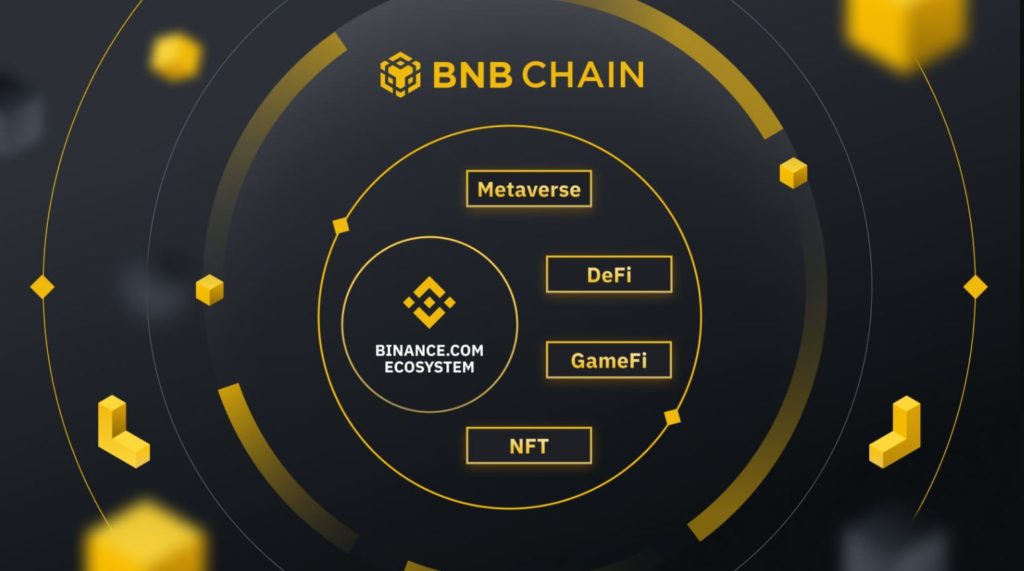Bitcoin has captured the attention of investors worldwide, and the evolution of financial products tied to Bitcoin has given rise to Exchange-Traded Funds (ETFs) designed to offer exposure to the cryptocurrency market. Two types of Bitcoin ETFs have emerged: Spot Bitcoin ETFs and Bitcoin Futures ETFs. Each offers distinct mechanisms for providing Bitcoin exposure, appealing to different investment preferences and strategies.
In this article, we’ll explore what Bitcoin ETFs are, delve into the differences between spot and futures Bitcoin ETFs, and examine the potential benefits and risks associated with each.
What is a Bitcoin ETF?
A Bitcoin ETF is an exchange-traded fund that allows investors to gain exposure to Bitcoin without directly owning the cryptocurrency. By investing in a Bitcoin ETF, investors can experience price movements of Bitcoin without having to store or manage digital assets themselves, thus avoiding the complexities associated with wallets, private keys, and secure storage.
The primary goal of Bitcoin ETFs is to bridge the gap between traditional finance and the digital currency world, allowing investors to add Bitcoin exposure to their portfolios with the convenience of trading shares on major stock exchanges.
The Difference Between Spot and Futures Bitcoin ETFs
The two main types of Bitcoin ETFs—Spot Bitcoin ETFs and Bitcoin Futures ETFs—offer exposure to Bitcoin’s value, but they do so in very different ways. Here’s a closer look at each:
1. Spot Bitcoin ETFs
A Spot Bitcoin ETF is backed by actual Bitcoin. When investors buy shares in a Spot Bitcoin ETF, the fund directly buys and holds Bitcoin equivalent to the value of those shares. This means that a Spot Bitcoin ETF’s price is directly correlated to the market price of Bitcoin, making it a straightforward reflection of Bitcoin’s spot price (or real-time market price).
Key Features of Spot Bitcoin ETFs
- Direct Ownership of Bitcoin: Spot ETFs are backed by actual Bitcoin holdings, so their value reflects Bitcoin’s market price without additional tracking mechanisms.
- Closer Price Correlation: Because they are backed by actual Bitcoin, Spot ETFs track Bitcoin’s price closely, reducing potential discrepancies in valuation.
- Simplicity for Investors: Investors gain exposure to Bitcoin’s price movements without needing to manage Bitcoin directly, as the fund takes care of purchasing, holding, and securing the Bitcoin.
Advantages of Spot Bitcoin ETFs
- Accurate Tracking of Bitcoin Price: Spot ETFs provide a direct, transparent link to the price of Bitcoin, making them ideal for those looking to capture pure Bitcoin price movements.
- Simplified Access: Spot ETFs make it easier for institutional and retail investors to add Bitcoin to their portfolios without handling the complexities of cryptocurrency storage and security.
Challenges Facing Spot Bitcoin ETFs
Despite their benefits, Spot Bitcoin ETFs face regulatory challenges, particularly in the United States. The U.S. Securities and Exchange Commission (SEC) has hesitated to approve Spot Bitcoin ETFs due to concerns over market manipulation and security. In contrast, other countries, including Canada, have approved Spot Bitcoin ETFs, with these funds gaining popularity in international markets.
2. Bitcoin Futures ETFs
Unlike Spot Bitcoin ETFs, Bitcoin Futures ETFs do not directly hold Bitcoin. Instead, they hold contracts tied to the future price of Bitcoin, known as Bitcoin futures. These futures contracts are agreements to buy or sell Bitcoin at a specified price on a future date. Bitcoin Futures ETFs invest in these contracts rather than the actual cryptocurrency.
Key Features of Bitcoin Futures ETFs
- Indirect Bitcoin Exposure: Bitcoin Futures ETFs derive their value from futures contracts rather than directly from the spot price of Bitcoin.
- Rolling Contracts: Futures ETFs frequently need to “roll” contracts, meaning they must buy new futures contracts before old ones expire. This rolling process can lead to “contango” or “backwardation,” where futures prices may be higher or lower than Bitcoin’s spot price.
- Regulated Framework: Bitcoin Futures ETFs are typically regulated by commodity futures regulatory bodies, which adds a layer of oversight and makes them more accessible to traditional investors.
Advantages of Bitcoin Futures ETFs
- Access for U.S. Investors: Bitcoin Futures ETFs received approval in the United States before Spot Bitcoin ETFs, providing a route for American investors to gain Bitcoin exposure.
- Compliance with Regulatory Standards: Futures ETFs have been more readily approved by regulatory bodies like the SEC, as they rely on regulated futures markets rather than direct spot market exposure.
- Lower Susceptibility to Market Manipulation: Because futures contracts are traded on regulated exchanges, Futures ETFs may face less price manipulation compared to the spot market.
Disadvantages of Bitcoin Futures ETFs
- Potential Tracking Error: Since Bitcoin Futures ETFs are not tied to Bitcoin’s spot price, there can be significant discrepancies between the ETF’s performance and Bitcoin’s actual market price.
- Contango and Backwardation Effects: When futures prices are higher (contango) or lower (backwardation) than spot prices, it can impact ETF performance, leading to potential “drag” on returns.
How Spot and Futures Bitcoin ETFs Work for Investors
Both Spot and Futures Bitcoin ETFs allow investors to gain exposure to Bitcoin, but they do so through different mechanics:
- Spot ETFs reflect the actual price of Bitcoin, so they may appeal to investors looking for a more direct correlation with the cryptocurrency’s value.
- Futures ETFs may appeal to investors interested in regulated financial products with futures contract-based exposure, though they should consider the possibility of tracking discrepancies.
Which is Better? Comparing Spot and Futures Bitcoin ETFs
The choice between a Spot Bitcoin ETF and a Bitcoin Futures ETF depends on an investor’s goals, risk tolerance, and market outlook. Here’s a breakdown:
- Risk Tolerance: Spot ETFs are generally considered to offer more straightforward exposure to Bitcoin. Futures ETFs, on the other hand, involve complexities like contract rollovers and tracking error, which may impact returns.
- Investment Goals: If an investor’s goal is to achieve near-identical performance to Bitcoin’s market price, Spot ETFs are typically preferable. Futures ETFs might be suited for those interested in regulatory-compliant products, especially in jurisdictions where spot ETFs are not approved.
- Time Horizon: Futures ETFs, due to the rolling of futures contracts, may not be ideal for long-term holders. Spot ETFs, being directly tied to the Bitcoin market, may provide more reliable performance for long-term exposure.
Regulatory Landscape for Bitcoin ETFs
The regulatory landscape for Bitcoin ETFs is rapidly evolving. In the United States, Bitcoin Futures ETFs were first approved by the SEC in 2021, while the approval of Spot Bitcoin ETFs remains a subject of ongoing debate. Other countries, such as Canada, have taken a more progressive approach, approving Spot Bitcoin ETFs that have gained popularity in their domestic markets.
The approval of Spot ETFs in the United States is highly anticipated, with many experts predicting that regulatory clarity on this matter could unlock billions in Bitcoin investments from institutional and retail investors who prefer the simplicity of direct spot price exposure.
Benefits and Risks of Investing in Bitcoin ETFs
Both Spot and Futures Bitcoin ETFs have potential benefits and associated risks that investors should consider:
Benefits
- Simplified Bitcoin Exposure: Bitcoin ETFs allow investors to gain exposure to Bitcoin without directly handling the cryptocurrency, simplifying the investment process.
- Accessibility: ETFs are traded on major exchanges, making it easier for investors to buy and sell shares.
- Regulated Investment Product: For many investors, the regulatory oversight of ETFs adds a layer of security and trust that may be lacking in direct cryptocurrency investments.
Risks
- Tracking Discrepancies: Futures ETFs may deviate from Bitcoin’s actual price due to contract rolling and market conditions, which can lead to tracking errors.
- Regulatory Uncertainty: The regulatory environment for Bitcoin ETFs is still evolving, and changes in policy can impact the performance and availability of these funds.
- Market Volatility: Bitcoin is known for its price volatility, and both Spot and Futures ETFs are susceptible to market fluctuations, which can result in significant price swings.
Future Outlook for Bitcoin ETFs
The growth of Bitcoin ETFs, both Spot and Futures, signals increasing institutional acceptance of Bitcoin as an asset class. Spot Bitcoin ETFs, if approved more widely, could provide a major boost to the market by attracting a broader range of investors. Meanwhile, the continued success of Bitcoin Futures ETFs indicates strong demand, though some investors remain eager for more direct investment vehicles.
Conclusion
Bitcoin ETFs offer an accessible route for investors to participate in the Bitcoin market without the complexities of direct ownership. Spot Bitcoin ETFs provide direct exposure to Bitcoin’s price, while Bitcoin Futures ETFs offer an indirect route through futures contracts, each catering to different types of investors. As regulatory frameworks evolve, Bitcoin ETFs may continue to gain traction, with Spot ETFs potentially becoming a significant part of the investment landscape if regulatory hurdles are overcome.
Investors should carefully evaluate their own risk tolerance, investment horizon, and goals when considering Bitcoin ETFs, keeping in mind the potential tracking errors in Futures ETFs and the regulatory considerations in Spot ETFs.




